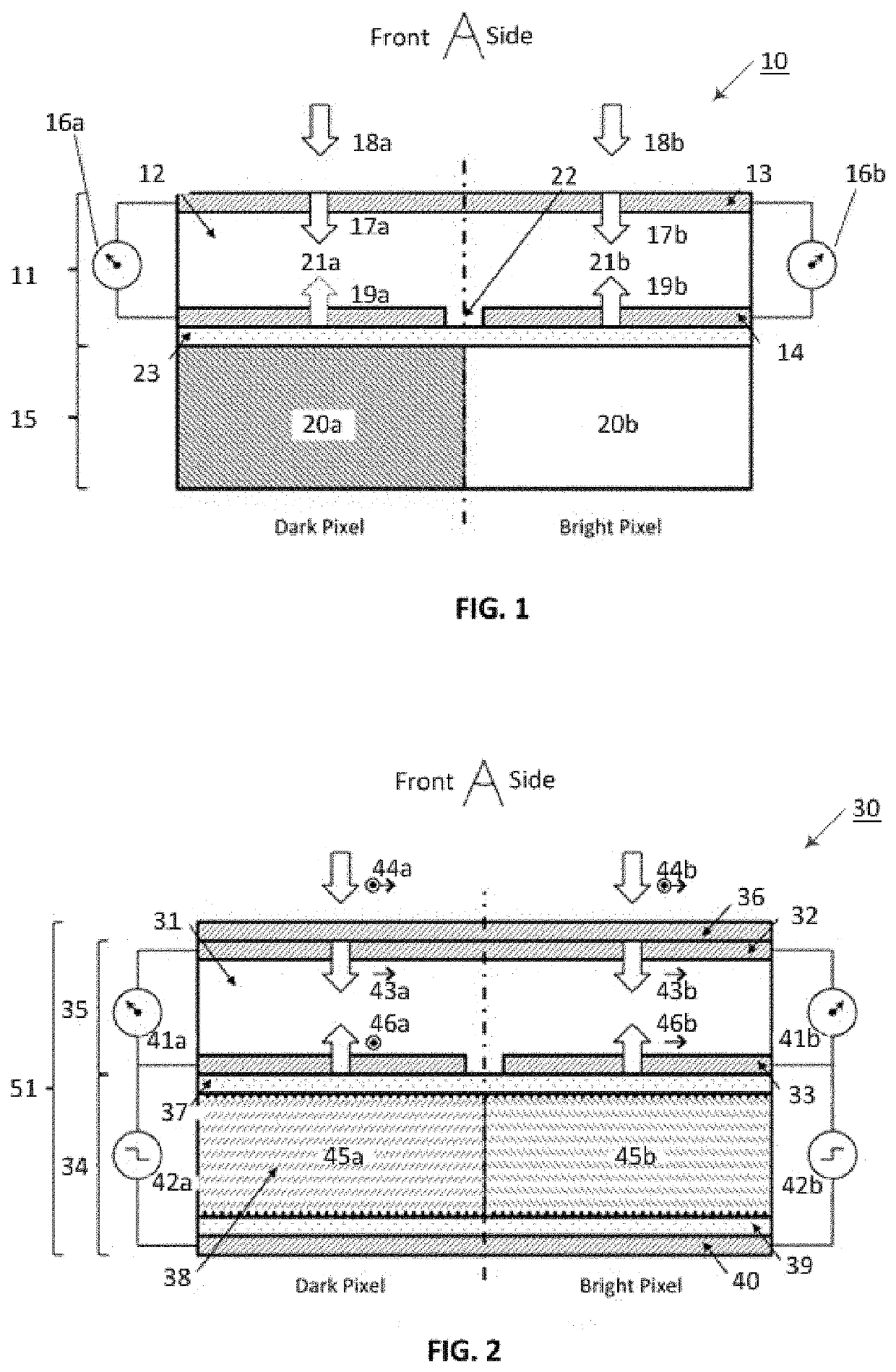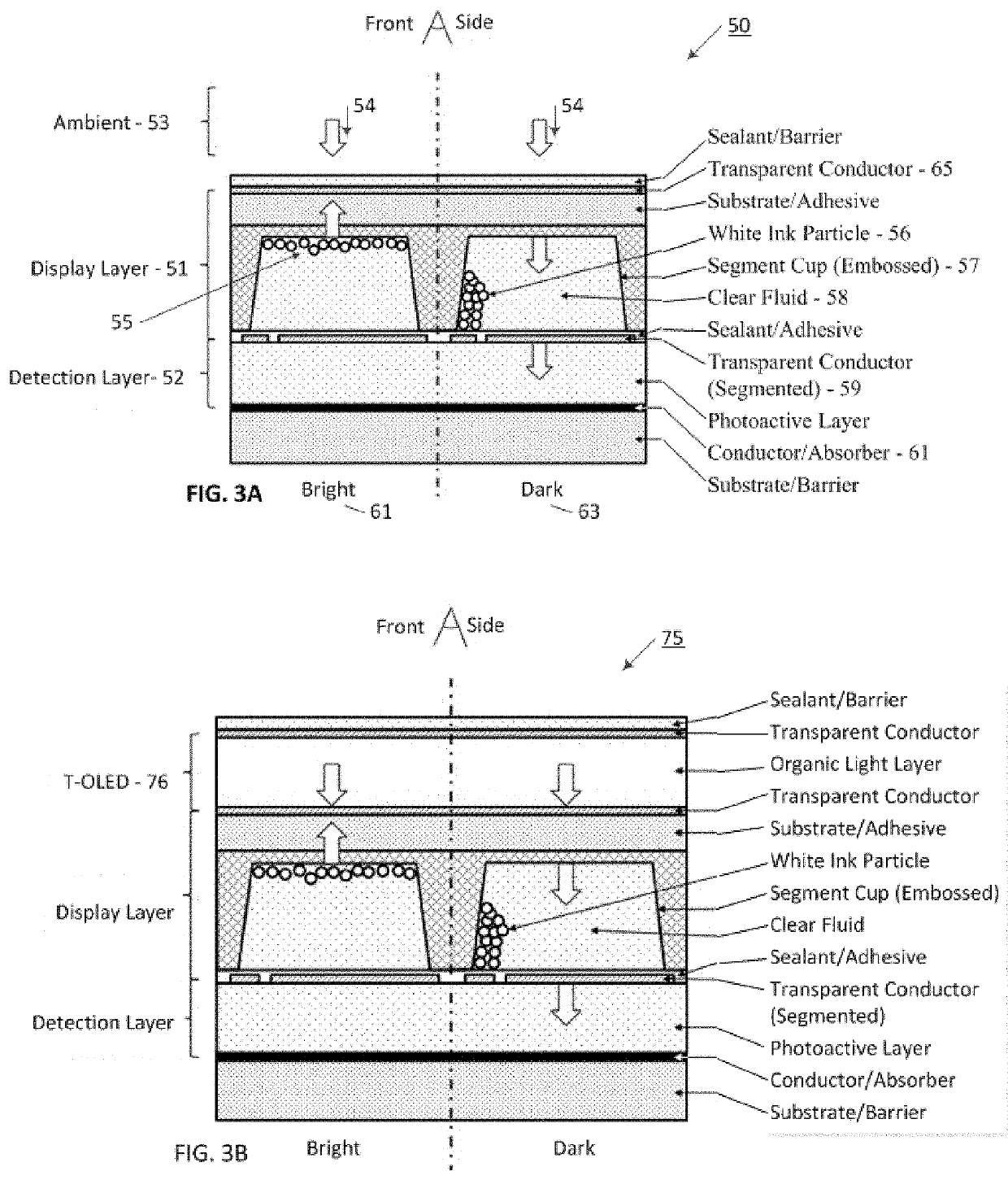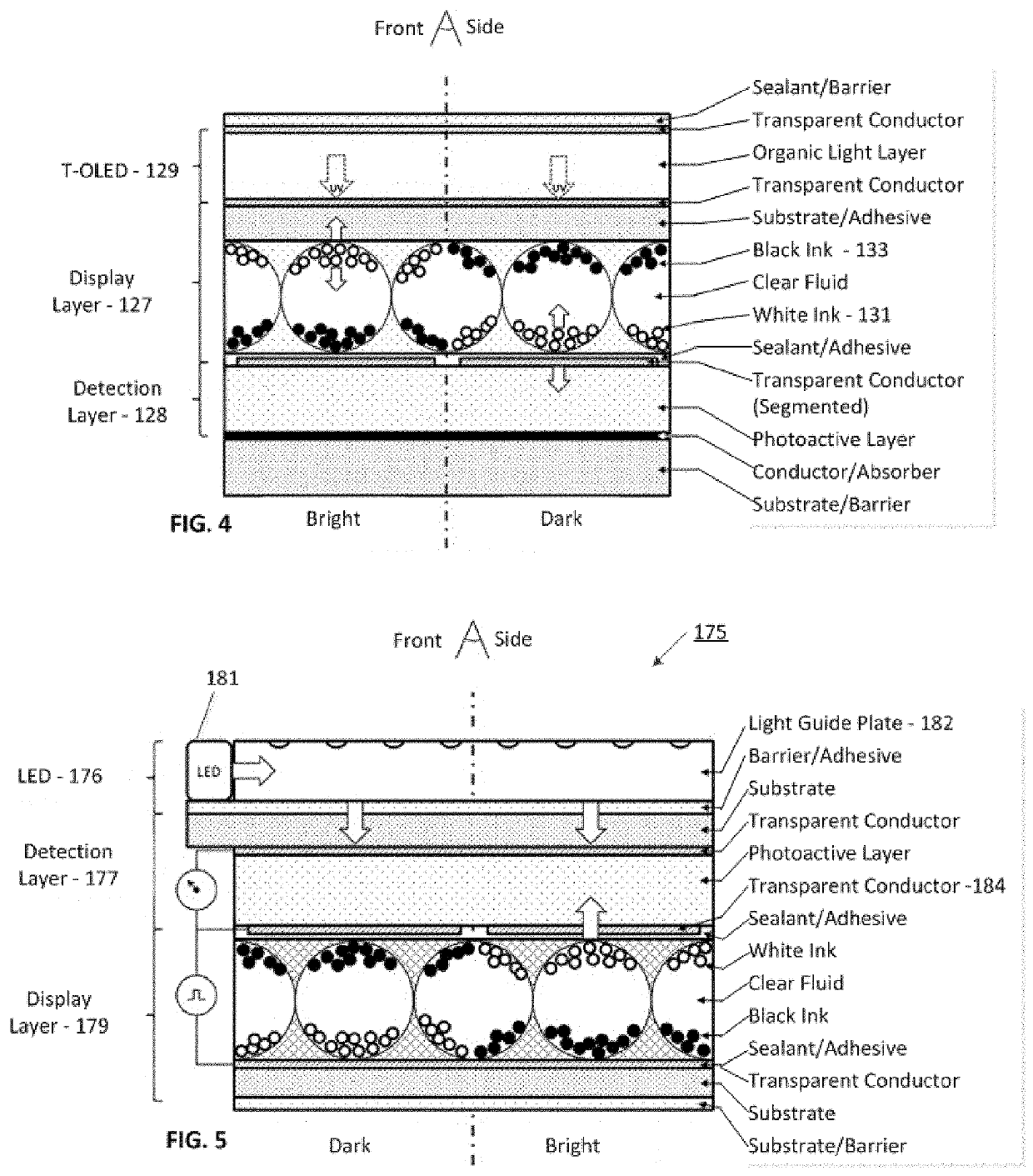Optically determining the condition of goods
a technology of condition and goods, applied in the field of optically determining the condition of goods, can solve the problems of message imperceptible to the reader, message cannot be communicated to the reader, product is spoiled or otherwise unusable,
- Summary
- Abstract
- Description
- Claims
- Application Information
AI Technical Summary
Benefits of technology
Problems solved by technology
Method used
Image
Examples
example 1
[0234]It will be understood that the optical state monitor may be constructed for attaching to particular products or services. Often, the surfaces of a product for good to be monitored may be constructed in a different physical shape, or have different types of materials. Accordingly, the optical state monitor construction may be adjusted to adapt to the particular good or product that is intended to be monitored. For example, a good or product surface may have a flexible optical state monitor that is particularly useful for conforming to curved geometries. One such geometry is a tubular (or cylinder) form 1400 as illustrated in FIG. 45, in which the tubular optical state monitor 1401 is positioned inside the good 1402. The good may further be enclosed in a container 1403, which may be opaque or (semi-) transparent to allow ambient light to pass through. The optical state monitor 1401 may, for instance, be configured for reflection mode measurement of the good as shown (e.g., using...
example 2
[0236]For transmission mode detection of goods which are semi-transparent (translucent), it is advantageous to utilize an optical state monitor which provides controlled illumination internal to the monitor (as opposed to ambient light such as sunlight). FIG. 46 illustrates an optical state monitor with a “wrap-around” geometry 1500, in which the flexible optical state monitor 1501 is wrapped around a partial circumference of a cylindrically shaped good 1502. Again, the good may be contained in an at least semi-transparent and rigid container 1503. The circumferential extent of the optical state monitor is preferably at least such that the light source and monitor (detection) site are diametrically opposed (i.e., approximately half the circumference), in order to maximize the transmitted light 1507 towards to detector 1504. For the configuration shown in FIG. 46 it is particularly preferred to use a transmissive and flexible substrate which also functions as a light guide plate for ...
example 3
[0239]An alternative optical state monitor configuration for transmission mode detection of goods, which are semi-transparent (translucent), can be achieved by a wound geometry 1700 placed within the good 1701 as shown in FIG. 48. In this configuration the light detection layer 1706 receives light from one side and the light source layer 1703 emits light from the other side of the optical state monitor (both in the inward radial direction). Although there are many stack configurations possible, the light detection layer (e.g. of OPV or inorganic PV materials) could, for instance, be deposited (as shown in FIG. 48) on one side of a common opaque substrate 1704, with the light source layer (e.g., OLED based, or separate light guide substrate with LEDs) attached to the other side. The opaque property of the substrate 1704 enables that only light 1705 originating from the light source layer 1703 is detected by the part of the (segmented) light detection layer which located inside the wi...
PUM
| Property | Measurement | Unit |
|---|---|---|
| wavelengths | aaaaa | aaaaa |
| time | aaaaa | aaaaa |
| frequency | aaaaa | aaaaa |
Abstract
Description
Claims
Application Information
 Login to View More
Login to View More - R&D
- Intellectual Property
- Life Sciences
- Materials
- Tech Scout
- Unparalleled Data Quality
- Higher Quality Content
- 60% Fewer Hallucinations
Browse by: Latest US Patents, China's latest patents, Technical Efficacy Thesaurus, Application Domain, Technology Topic, Popular Technical Reports.
© 2025 PatSnap. All rights reserved.Legal|Privacy policy|Modern Slavery Act Transparency Statement|Sitemap|About US| Contact US: help@patsnap.com



